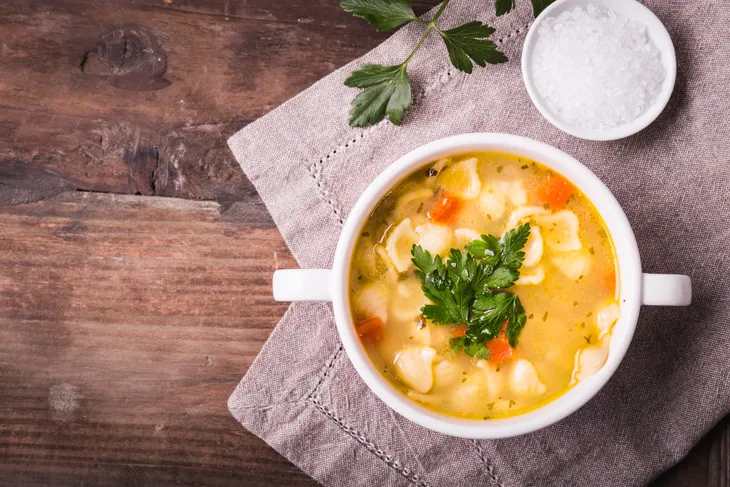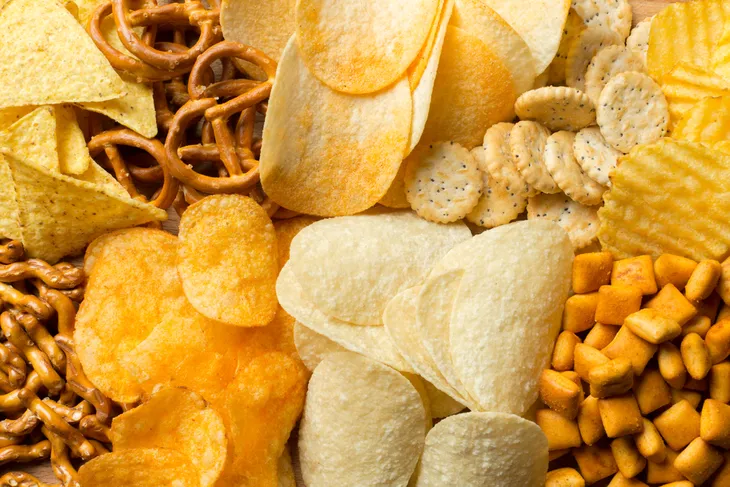Hand, foot, and mouth disease is an infection caused by the Coxsackie virus. It’s most common in children under 10 but anyone can get it, including adults. While the infection can look very unpleasant, the Centers for Disease Control and Prevention (CDC) reports that it typically clears up on its own after 7 to 10-days. But you’ll still have to manage the painful symptoms. The good news is, there are a variety of remedies you can try at home to help provide relief.
Eat Frozen Treats
Hand, foot and mouth disease can cause seriously painful symptoms, from a sore throat to painful blister-like lesions inside the mouth. One way you can help ease these discomforts is by providing your child with frozen treats.
If you want to keep these treats healthy, reach for real fruit juice frozen popsicles, or frozen yogurt. Even plain ice chips can do the trick — but make sure they don’t pose a choking hazard for your child.
Drink Cold Beverages
Along with frozen treats, cold beverages can help soothe the symptoms of a sore mouth. Again stay away from sugar-loaded drinks like soda and artificial fruit juice.
Milk, ice-cold water, or 100-percent fruit juices are all great options to help ease the symptoms of hand, foot and mouth disease.
Eat Soft Foods
Since pain inside the mouth is a common symptom of hand, foot and mouth disease, it’s best to stay away from crunchy, hard foods. Instead, provide your child with soft foods that don’t require much chewing.
For breakfast, they can enjoy smoothies, oatmeal, waffles, and bananas. For lunch or dinner, you may want to stick to soups and stews.
Avoid Acidic Foods and Beverages
You’ll want to add acidic foods and beverages to the avoid list while your child is recovering. Foods like spaghetti sauce and beverages such as orange juice may irritate the mouth, making the sores even more painful.
Other examples of acidic foods include lemons, limes, tomatoes, oranges, pineapple, grapefruits, and more. Some great low acidic options include yogurt, milk, some soft fresh vegetables, and whole grains.
Avoid Salty and Spicy Foods
Acidic foods and drinks aren’t the only things you need to stay away from. You should also steer clear of salty and spicy foods while recovering from hand, foot and mouth disease.
Foods like chips, nuts, pretzels are crunchy which can irritate the mouth sores but the texture isn’t the only culprit. The salt on these foods can cause even more irritation. Spicy foods can have a similar effect. So, with this in mind, opt for bland soft foods.
Saltwater Gargle
If your child can rinse without swallowing, consider a saltwater gargle. Saltwater may help ease the pain caused by the mouth sores while also aiding the recovery in the process. It works by reducing inflammation and bacteria in the mouth.
To make the solution, combine table salt or Himalayan pink salt to warm water and have your child gargle the solution, and then spit it out. It’s recommended that they gargle three to four times per day or as often as needed.
Epsom Salt Bath
To ease the sores on the body, draw a bath and add 1-cup of Epsom salts. Then soak in the water for 15 to 20-minutes.
Epsom salts, also known as magnesium sulfate, are a chemical compound made up of magnesium, sulfur, and oxygen. The reason it’s effective is that magnesium is known to help prevent inflammation by decreasing the production of inflammatory cytokines in the body.
Baking Soda Bath
If you don’t have Epsom salts on hand, a baking soda bath may be just as effective in soothing the symptoms of hand, foot and mouth disease.
Fill the tub and add 1/2-cup of baking soda. Once the baking soda has completely dissolved, soak in the bath for 15 to 20-minutes. While there are no scientific studies that prove this is effective, anecdotal evidence advocates that this remedy can help ease inflammation and itching symptoms.
Coconut Oil
Coconut oil is chock-full of benefits and is touted as the “cure-all” for many health problems from digestive ailments to skin conditions and more. But it turns out it may also be an effective remedy for hand, foot and mouth disease.
The anti-inflammatory and analgesic properties may be what makes it effective in helping heal blisters and rashes. To use this remedy, put virgin coconut oil on a cotton ball. Next, apply the oil to the affected area and allow it to dry. For best results, apply it once daily
Over-the-Counter Pain Reliever
To help ease the discomforts of hand, foot and mouth disease, an over-the-counter (OTC) pain reliever may be able to help. This includes acetaminophen or ibuprofen.
If these home remedies and OTC medications don’t work, you may need to talk to your doctor. They may prescribe a pain reliever to help relieve the discomfort caused by the disease.
When to See a Doctor
If your child stops drinking or eating you should take them to the doctor right away. You should also call the doctor if they are vomiting and showing signs of dehydration. Some common signs of dehydration include refusing fluids or food for 4 to 8-hours, dry skin, mouth, and tongue, no tears when crying, and less or no urine.
If your child has a severe sore throat, is breathing rapidly, or has a severe headache combined with vomiting, confusion, or unusual sleepiness you should also take them to the doctor right away.
How to Prevent Spreading the Disease
While you and/or your child are recovering it’s important that you take the necessary steps to help prevent spreading the disease. First, you should stay away from other people, especially during the first few days of the illness.
Next, be sure to wash your hands often and effectively, especially after changing diapers. The virus can spread easily through the saliva (close contact) and feces of an affected child. Finally, be sure to disinfect contaminated surfaces and wash all clothing, bedding, and any other soiled items regularly.















